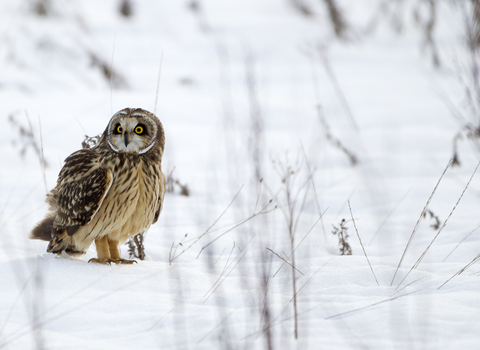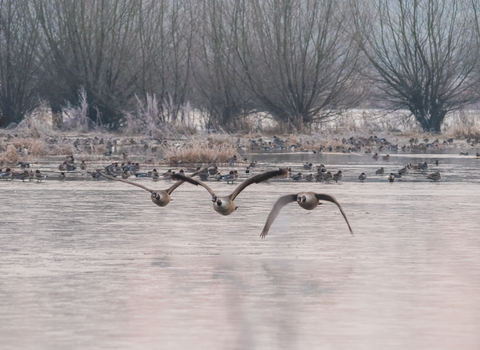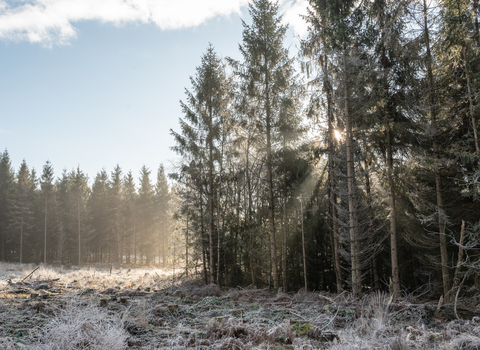While it may be tempting to curl up and hibernate through winter like many of our wildlife, there's still plenty to see and do during the shorter days. Winter is a great time to spot different birds, like the Arctic and Scandinavian visitors that fly in to call Gloucestershire home for the winter months.
Despite the temperature drop there are still a fair few active animals boldly foraging for food, and some signs of spring will start popping up from January. Click the (i) icons to find the image credit, or on the images themselves to find out more about what that species is up to.
What are mammals, birds and amphibians up to?
Hedgerows provide great places of shelter for it’s inhabitants, protecting them from some of the rains, filtering the wind. Seven-spotted ladybirds huddle together in the nooks and crannies to keep warm, while hedgehogs sleep rolled up in their nests (called hibernacula) at their base.
Plants to spot
While most plants and trees have dropped their leaves, some keep hold of theirs and others even produce berries, while January and February bring some new growth like snowdrops and lesser celandines.
Garden visitors
Check out what birds you could see in gardens or in parks while they're out on the search for food.
Ways to help wildlife this winter
Winter can be a tough time for many animals, and while some hibernate through these months, others face the challenge of finding food and water. Fortunately, there are many quick and easy ways for everyone to support wildlife this winter…
Check out the list below to find out more about how you can give nature a helping hand this season.
Feed the birds by making an edible wreath
Just staying warm can expend a huge amount of energy, so energy-rich foods can go a long way to helping out garden visitors. Provide a consistent supply of the food they enjoy and need and, as well as helping them out, you'll get a chance to watch them while they take advantage of their new supply.
Vine House Farm Foods, partners of The Wildlife Trusts, have an excellent selection of foods that they'll love, check them out here. For each purchase, they donate 4% of the sale to Wildlife Trusts whether they are a Wildlife Trust member or not.
You can also get crafting and make a Christmas wreath for birds, which is not only beautiful but provides another source of food as birds become particularly resourceful.
Put out water
Providing fresh water is just as important as food, and is another simple way to help out. As well as a bathing station for birds to keep their feathers in good condition, providing a shallow dish of water can be used by hedgehogs, toads, and even foxes.
As well as keeping it topped up, ensure you break through the ice after freezing nights.
Support hibernating animals
Hedgehogs, frogs, toads, bats and even many insects spend the winter months hibernating. You can provide them with a sheltered place to spend this time by leaving piles of logs and leaves in the garden. Compost heaps are also a favoured spot by many so check it in spring before disturbing it.
Have a greener Christmas
Christmas is a time of celebration, to enjoy good food and spend time with friends and family. Unfortunately, this can often go hand in hand with bins overflowing with food waste, plastic packaging and unrecyclable wrapping paper.
By making environmentally-friendly buying choices this festive season (and throughout the year), you can help to keep this unnecessary waste down and reduce your impact on wildlife.
Winter reserves to explore
We've picked out a few reserves that look particularly stunning on a frosty morning for you to discover.

























